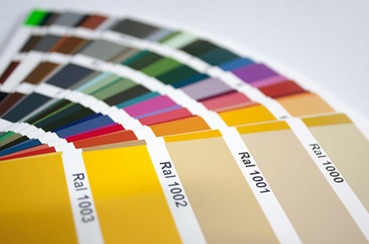
Choosing the best paint for interior painting in Pleasant Hill may seem challenging. Imagine walking into a paint store and being overwhelmed by many paints of various brands, formulations, colors, and finishes. But the selection process won’t be too complicated if you know what you want.
Here are the five things that homeowners should consider when choosing interior paints:
- Coverage
- VOCs (paint fumes)
- Drying time
- Washability
- Quality of finish
Quality interior wall paints may cost more than low-grade paints, but the benefits will give the homeowners value for their money.
Premium paints contain more solids for better coverage, have better flow from the paint can to the surface, and provide a smoother, more solid, and longer-lasting finish.
The best interior paints are those with low or zero VOCs (volatile organic compounds). Thus, they don’t emit as much chemical fumes as the other paints. This factor is important for indoor painting, especially for spaces lacking proper ventilation.
If drying time is one of your concerns, it’s best to choose fast-drying and fast-curing paints that are especially suitable for indoor use.
Water-based paints: latex and acrylic
Most paints for interior applications use water as a liquefying base. Two types of water-based paints are commonly used for home interior painting: latex and acrylic.
- Latex paints are currently the most common paints for interior applications. They are fast-drying, easy to apply, and easy to clean. They are very safe to use as they emit only a few to no chemical fumes, making them ideal for indoor painting. Latex paints are also the most affordable and available option, as they come in a wide range of colors and finishes.
- Acrylic paints are similar to latex in composition, except they contain more acrylic polymers. This makes acrylic paints stronger and more durable than latex. But they are also more expensive.
Types of paint finishes
Paints are also classified by their finishes. You may want to educate yourself more about appropriate paint finishes for specific types of surfaces.
1) Flat or matte
Also known as simply “wall paint,” flat or matte is the dullest paint finish in the bunch. It has no shine, gloss, or sheen. Flat or matte paints are typically easy to apply, although it takes more than one coat to achieve the solid color effect. This finish is usually used on interior walls and ceilings.
Flat or matte is especially ideal for camouflaging minor wall cracks, bumps, dents, and other imperfections that glossier paints might highlight. The resulting finish can have a slightly chalky feel to it. However, flat or matte paint will easily leave marks or scuffs that require retouching. Also, it cannot stand up to cleaning and scrubbing, although some manufacturers have come up with flat paints that allow surface cleaning without damaging the finish. Matte enamel is a more durable product than regular flat and doesn’t need a lot of retouching.
2) Eggshell
Eggshell is considered one of the most popular paint finishes used in homes. It is a cross between a flat and glossy finish, giving off just a tiny amount of sheen. Eggshell finish can noticeably reflect light.
With just a slight hint of gloss, eggshell is suitable for most walls. Unlike regular flat or matte, eggshell holds up better to cleaning and scrubbing. But like the former, eggshell has an excellent ability to hide flaws.
3) Satin
Despite the name, satin actually gives off a slightly velvety appearance with only a faint glossy finish. Satin is also a prevalent choice for walls in homes with kids and pets. It is easier to clean and withstands regular wear and tear. Thus, it is recommended for highly functional areas such as kitchens, bathrooms, hallways, and children’s playrooms.
Although usually applied on walls, its faint gloss makes satin ideal for painting door and window trim. However, it is not recommended to hide surface flaws as it tends to reveal them, especially if not applied correctly.
4) Semi-gloss
The semi-gloss finish gives off a more significant amount of sheen than eggshell and satin. It can reflect light more noticeably. Semi-gloss paints are most often used on doors and trim, as well as shelves and cabinets in kitchens and bathrooms.
With its significant amount of sheen and reflectivity, a semi-gloss finish is only sometimes recommended for wall painting. However, it can be helpful for areas where traffic and moisture are constantly present, such as the bathroom and kitchen, owing to its excellent durability and cleanability.
Like other glossy paints, semi-gloss tends to show flaws, so careful and thorough surface preparation is required before applying this paint.
5) High-gloss or glossy
As the name suggests, a high-gloss finish has the highest degree of sheen and gloss. It has a highly reflective appearance that is similar to that of enamel or plastic. High-gloss paints are mostly reserved for doors, trim, cabinets, shelves, railings, and banisters. It is also the most durable paint finish and can withstand constant traffic, cleaning, and scrubbing. However, it is also the most suspect in revealing surface flaws.
Use the right type of paint on your interior walls
Not all paints are created equal, so don’t make the mistake of choosing the wrong paints for your interior walls. Some paints do not react well to moisture or cannot be wiped without leaving ugly marks on the wall.
If you still need professional advice in this regard, you can always turn to Custom Painting, Inc. Our licensed and insured paint experts will guide you in choosing the correct products for your next house painting in Pleasant Hill project.

